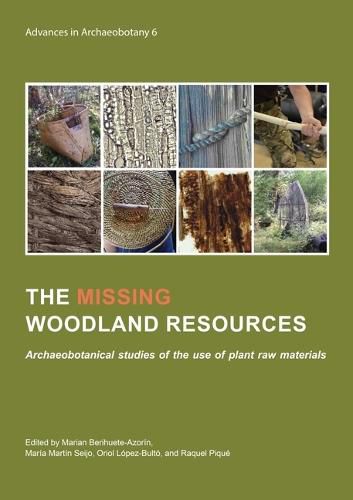Readings Newsletter
Become a Readings Member to make your shopping experience even easier.
Sign in or sign up for free!
You’re not far away from qualifying for FREE standard shipping within Australia
You’ve qualified for FREE standard shipping within Australia
The cart is loading…






Woodlands are a key source of raw materials for many purposes since early Prehistory. Wood, bark, resin, leaves, fibers, fungi, moss, or tubers have been gathered to fulfill almost every human need. That led societies to develop specific technologies to acquire, manage, transform, elaborate, use, and consume these resources. The materials provided by woodlands covered a wide range of necessities such as food, shelter, clothing, or tool production, but they also provided resources employed for waterproofing, dying, medicine, and adhesives, among many others. All these technological processes and uses are commonly difficult to identify through the archaeological record. Some materials are exclusively preserved by charring or in anaerobic conditions at very exceptional sites or leave only a very slight trace behind them (e.g., containers). Consequently, they have received far less attention in archaeobotanical studies compared to other kind of plant materials consumed as food or firewood.
This book provides an overview of technological uses of plants from the Palaeolithic to the Post-Medieval period. This collection of papers presents different archaeobotanical and archaeological studies dealing with the use of a wide range of woodland resources, most of them among the less visible for archaeology, such as bast, fibers, and fungi. These papers present different approaches for their study combining archaeology, archaeobotany, and ethnoarchaeology.
$9.00 standard shipping within Australia
FREE standard shipping within Australia for orders over $100.00
Express & International shipping calculated at checkout
Woodlands are a key source of raw materials for many purposes since early Prehistory. Wood, bark, resin, leaves, fibers, fungi, moss, or tubers have been gathered to fulfill almost every human need. That led societies to develop specific technologies to acquire, manage, transform, elaborate, use, and consume these resources. The materials provided by woodlands covered a wide range of necessities such as food, shelter, clothing, or tool production, but they also provided resources employed for waterproofing, dying, medicine, and adhesives, among many others. All these technological processes and uses are commonly difficult to identify through the archaeological record. Some materials are exclusively preserved by charring or in anaerobic conditions at very exceptional sites or leave only a very slight trace behind them (e.g., containers). Consequently, they have received far less attention in archaeobotanical studies compared to other kind of plant materials consumed as food or firewood.
This book provides an overview of technological uses of plants from the Palaeolithic to the Post-Medieval period. This collection of papers presents different archaeobotanical and archaeological studies dealing with the use of a wide range of woodland resources, most of them among the less visible for archaeology, such as bast, fibers, and fungi. These papers present different approaches for their study combining archaeology, archaeobotany, and ethnoarchaeology.